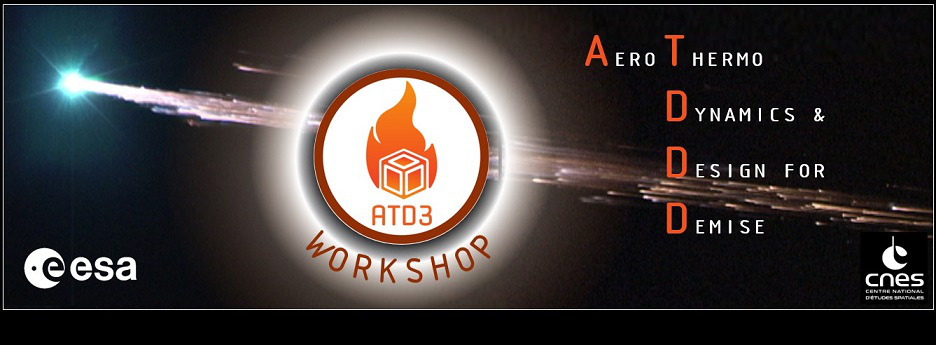Speaker
Description
The goal of the ongoing GSTP “Validation of Space Debris Demise Tools using Plasma Wind Tunnel Testing and Numerical Tools” between VKI (prime) and Cenaero is the execution of detailed high-enthalpy demisability experiments in the VKI Plasmatron to support the development of high-fidelity numerical models, from which improved engineering correlations may be eventually derived.
During the first part of the project, the VKI team intensively tested titanium (grades 2 and 5), quartz, and Zerodur in subsonic plasma conditions. We employed a comprehensive experimental setup, targeting recession of the surface as well as the radiative response of the different materials. For this purpose, we focused several calibrated radiometry instruments (Heitronic radiometer 0.6-39μm, Raytek 2-colour pyrometer 0.75-1.1μm, Optris 1-colour pyrometer 5μm) along with a high-temperature infrared camera (3-5μm) in the stagnation region of the test sample. This allowed us the reconstruction of 3D emissivity-corrected surface-temperature maps of the (possibly receding) material, which could be used for quantitative comparison with the numerical results. The plasma freestream was experimentally characterized using spatially resolved emission spectroscopy along with numerical simulations with our in-house resistive magnetohydrodynamic ICP code.
While Zerodur is a complex lithium-aluminosilicate glass-ceramic, widely used in space applications, basic quartz (SiO2) is helping us to deeply characterize the experimental setup and to understand demise phenomena (melting, evaporation) in the absence of complex oxidation processes. Quartz experiments have been performed below demising temperatures to verify the overall energy balance with numerical models as well as at higher heat loads to demise the material. The experiments have been simulated by VKI using a 1D stagnation-line CFD code coupled to a material solver, as well as by Cenaero through the high-fidelity solver ARGO, with both numerical strategies matching well the measured surface temperatures.
Titanium has been investigated in various atmospheres (air, nitrogen) and heat loads, again highlighting the complex surface chemistry, which should be well understood to achieve a detailed description of the material response. No test condition has been identified for the moment to address solely the melting of the material. Further analysis of the surface products is currently ongoing.
In parallel to the subsonic experiments, three supersonic nozzles have been designed, manufactured, and commissioned in the Plasmatron facility for stagnation-point and flat-plate testing. The capability and test envelope of those nozzles are currently being characterized and we plan to present the first overview of those results at the Workshop.

